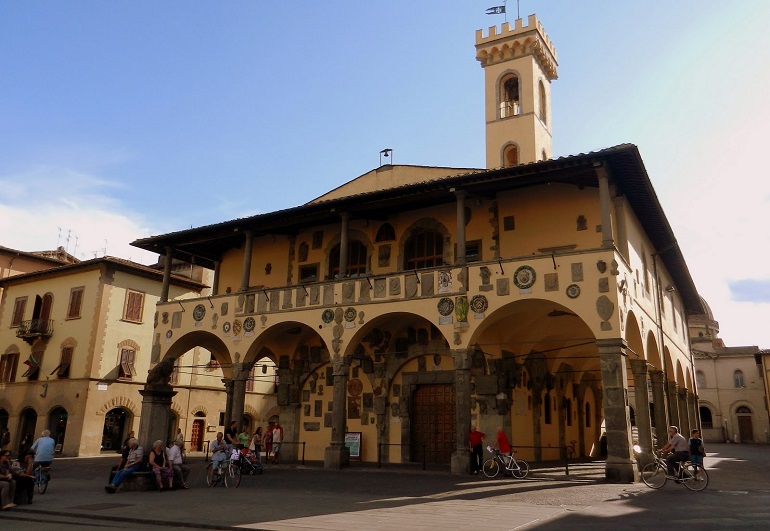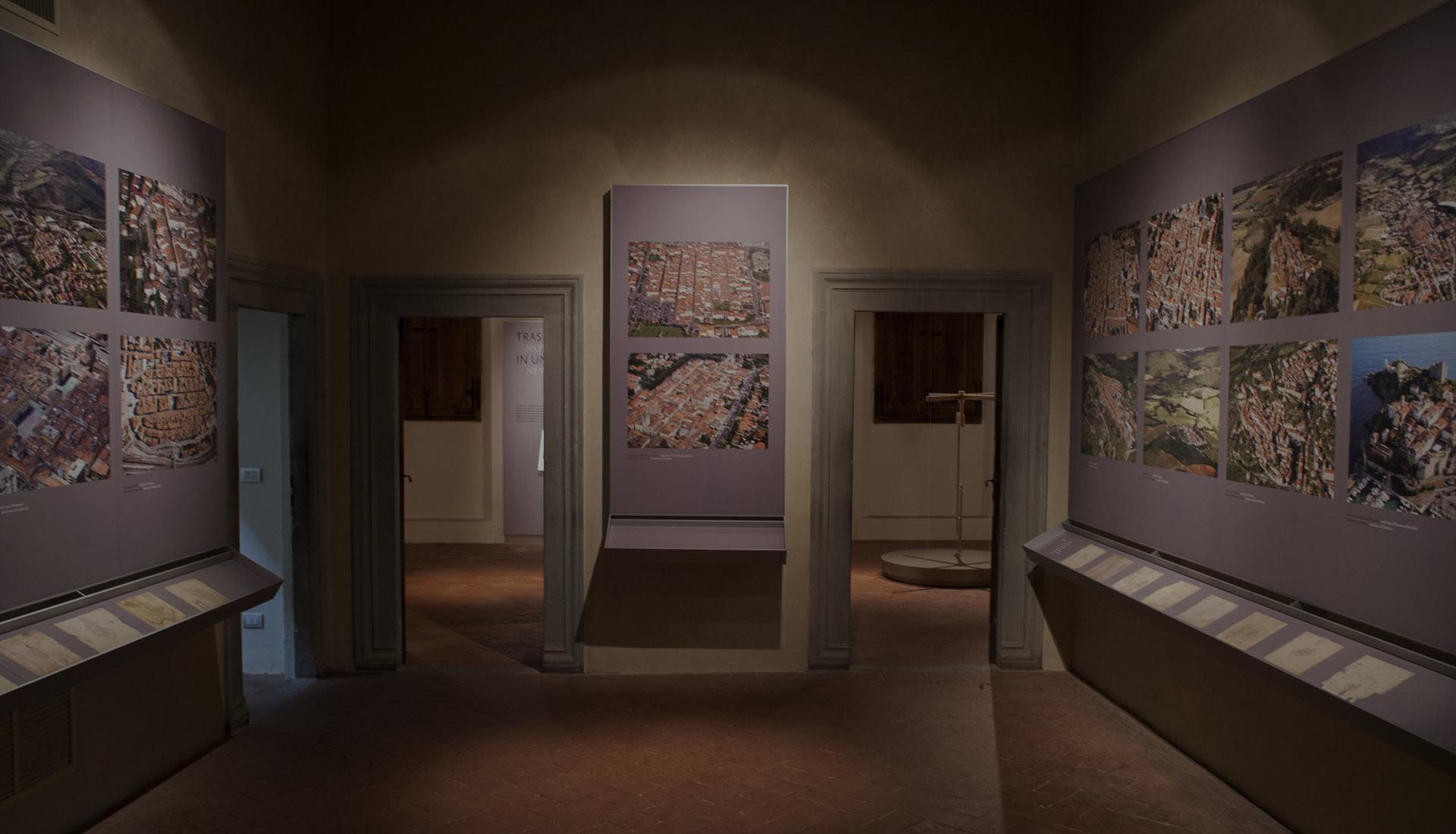Praetorian Palace, better known as Palazzo d’Arnolfo, take its name from the architect Arnolfo di Cambio that has planned the entire thirteenth-century castle and probably, under information of Giorgio Vasari, also this palace. It is situated exactly in the center, between the two main squares, Masaccio and Cavour, , overlooking the main street of the town, Corso Italia. The medieval plant has been revised in the fifteenth century; during the ‘80s the palace has enjoyed restoration work. Since December 21, 2013 is home to the Museum of Terre Nuove.

PALAZZO D’ARNOLFO
The ground floor is fenced on all sides by a great arcade, with four arches on facades and six on every side, divided by octagonal pillars decorated with coats of arms of the dominant city (the Florentine lily) and of the Guelph part (the Guelph eagle). In the atrium is conserved the original Marzocco, the statue on the high pedestal made of stone that represents the Florentine domain: a seated lion holding a shield with the paw the lilies. Originally placed in Piazza Cavour in front of the palace, it is now replaced with a copy and preserved inside Palazzo Pretorio.
On the walls of the atrium there are frescoes and arms of the fifteenth century. The first floor has two lodges and capitals from the Renaissance period on the facades. A tower emerges from the center of the back wall, with a double order of windows and an embattled crown.
Palazzo d’Arnolfo has an eccentric beauty for Tuscan constructive habits, referring more to northern models than to those of central Italy; its appeal is undoubtedly increased in by the numerous coats of arms of the Vicariate that constellate the main facade: 250 are those remained, from the most ancient of 1410 to the most recent one of 1772 made of stone, ceramic, some sculpted in columns and pillars, others are painted.
On Piazza Masaccio look out the Basilica of Santa Maria delle Grazie, the church of San Lorenzo and the Palazzaccio. This one, also known as Salviati Palace, has its origin in the fourteenth century with successive reworkings. The facade reminds us of tuscan architectural models of the late Renaissance in the triple juxtaposition of lodges and lowered arches in the first two orders and the third architraved in manner of terminal terrace.



MUSEUM OF TERRE NUOVE
The Museum of Terre Nuove (New Towns) in located in the palace known as “di Arnolfo” and presents the phenomenon of the foundation of New Towns that interested a large part of the Medieval Europe. In fact, with the renaissance of the year 1000 the population’s growth, the flourishing of the cities, the recovery of commercial trades inaugurated a favorable time for a relative progress.
Kings, the secular nobility, church institutions and urban Communes expanded the territories under their control restructuring the settlement patterns of the countryside: the New Towns were then founded, here the new inhabitants were freed front feudal obligation, enjoyed tax exemptions and were given a lot on which to build their house.
The museum focuses on the development that such phenomenon had in Tuscany and in the Florentine territory where, at the end of XIII century, numerous new centres were born: among them San Giovanni Valdarno, or rather Castel San Giovanni. Through videos, still images, interactive computer animations, models and historical recreations the Museum presents the issues of urban design the influenced the plans of the New Towns and outlines the political, demographic, economic and military issues that impacted these new communities, aiming to immerse visitors in the lively Medieval world to which such centres belong.
Web site: www.museoterrenuove.it
Useful information
Opening Hours:
Monday – closed;
From Tuesday to Friday – 3 | 7 pm;
Saturday and Sunday – 10 am | 1 p.m / 3 | 7 pm.
Contacts:
Telephone 0559126213 – info@museoterrenuove.it – www.museoterrenuove.it
Costs:
Full price € 5
Reduced for groups (>15), 18/25 years, >65 years € 3
Free entrance under 18 years of age, for visitors with disabilities ancd accompanying visitors, tour guides and group leaders, MIBACT personnel, journalists, ICOM, ICOMOS and ICCROM members, residents of the Comune San Giovanni Valdarno. Free for everybody for every first Sunday of the month.
Guided tour / activity € 3.


